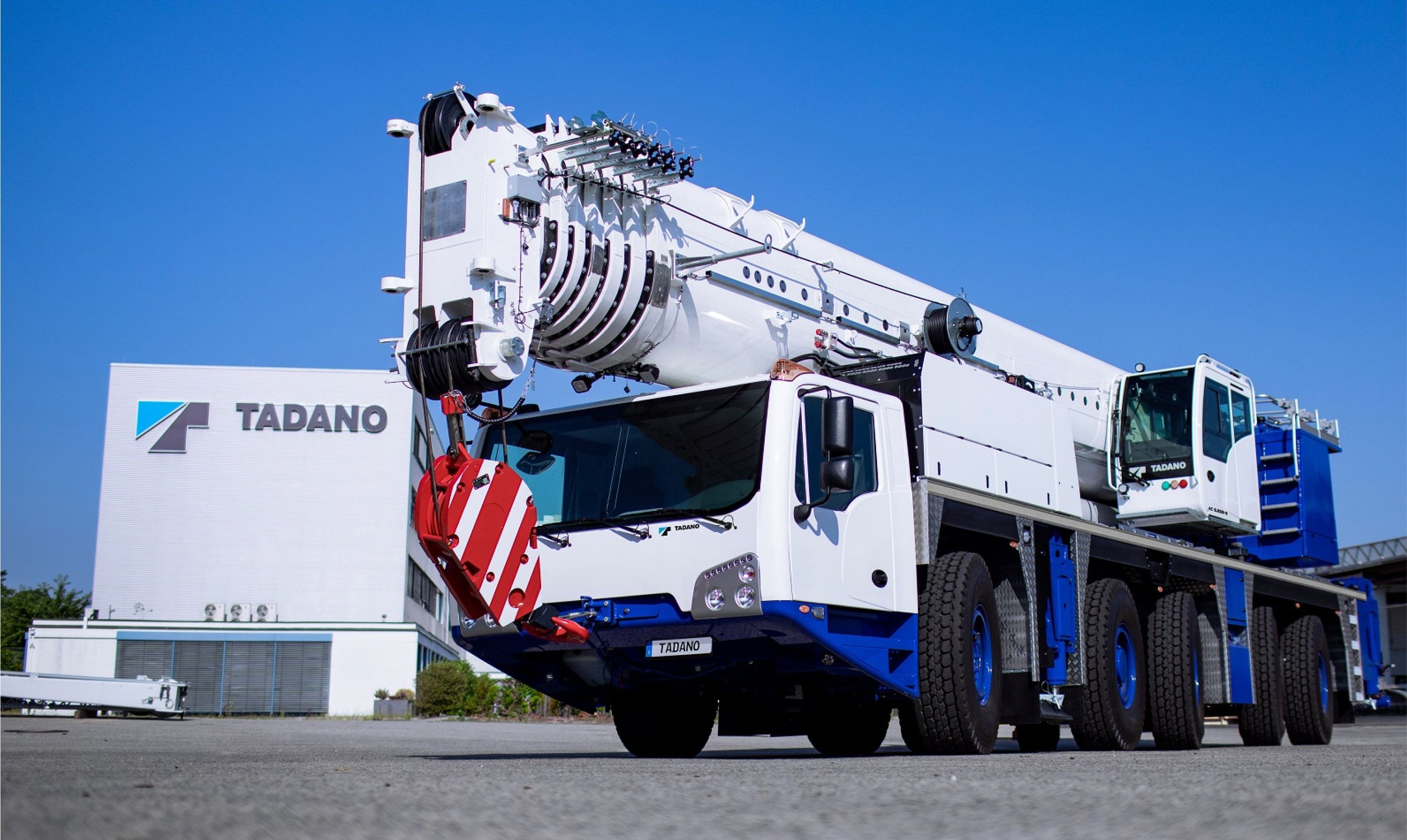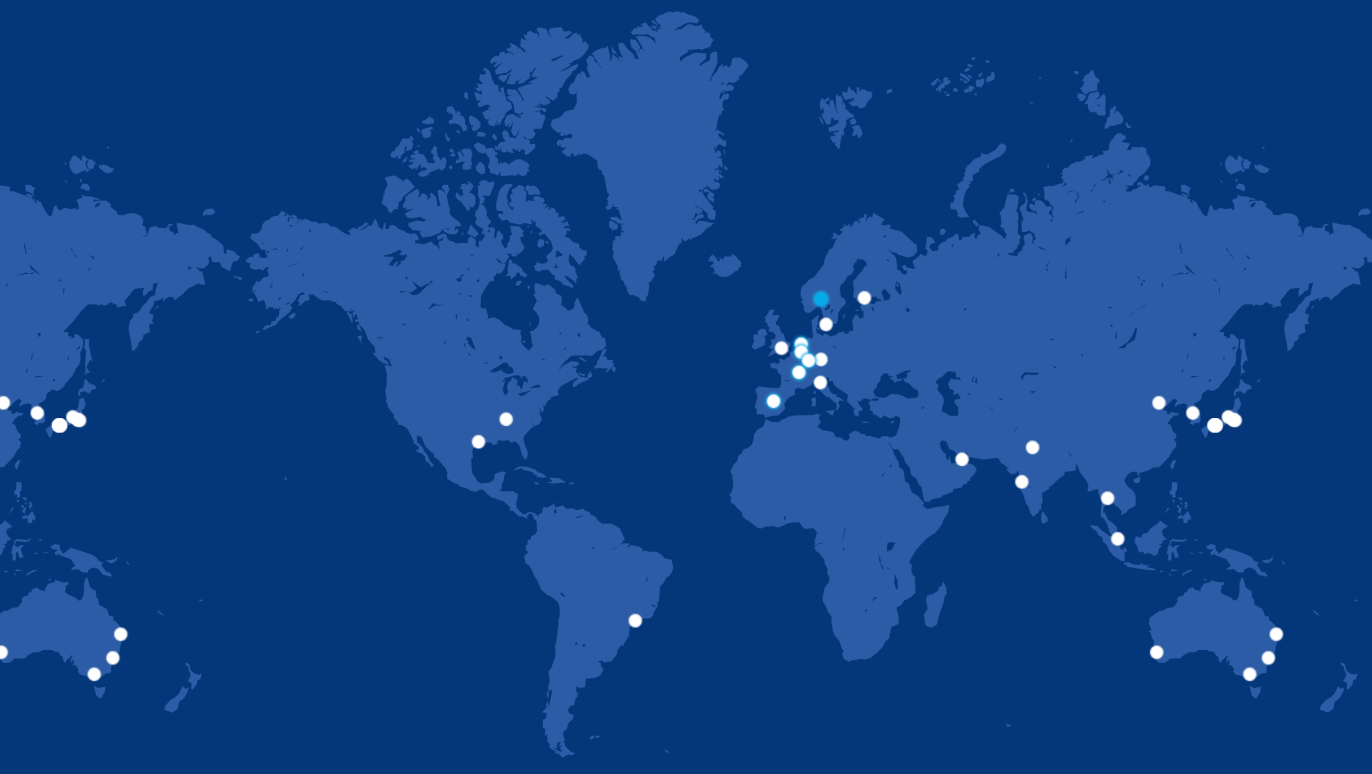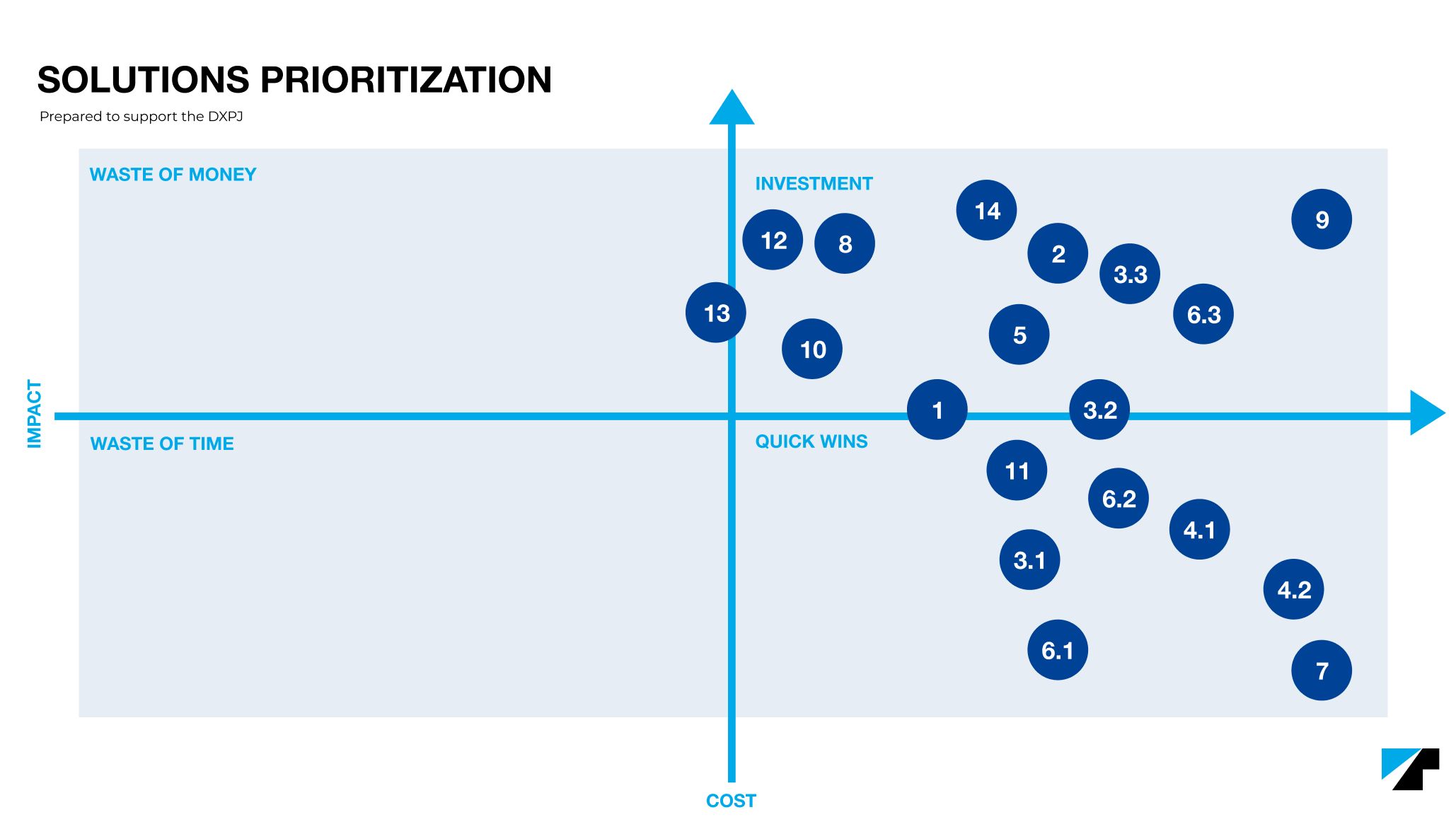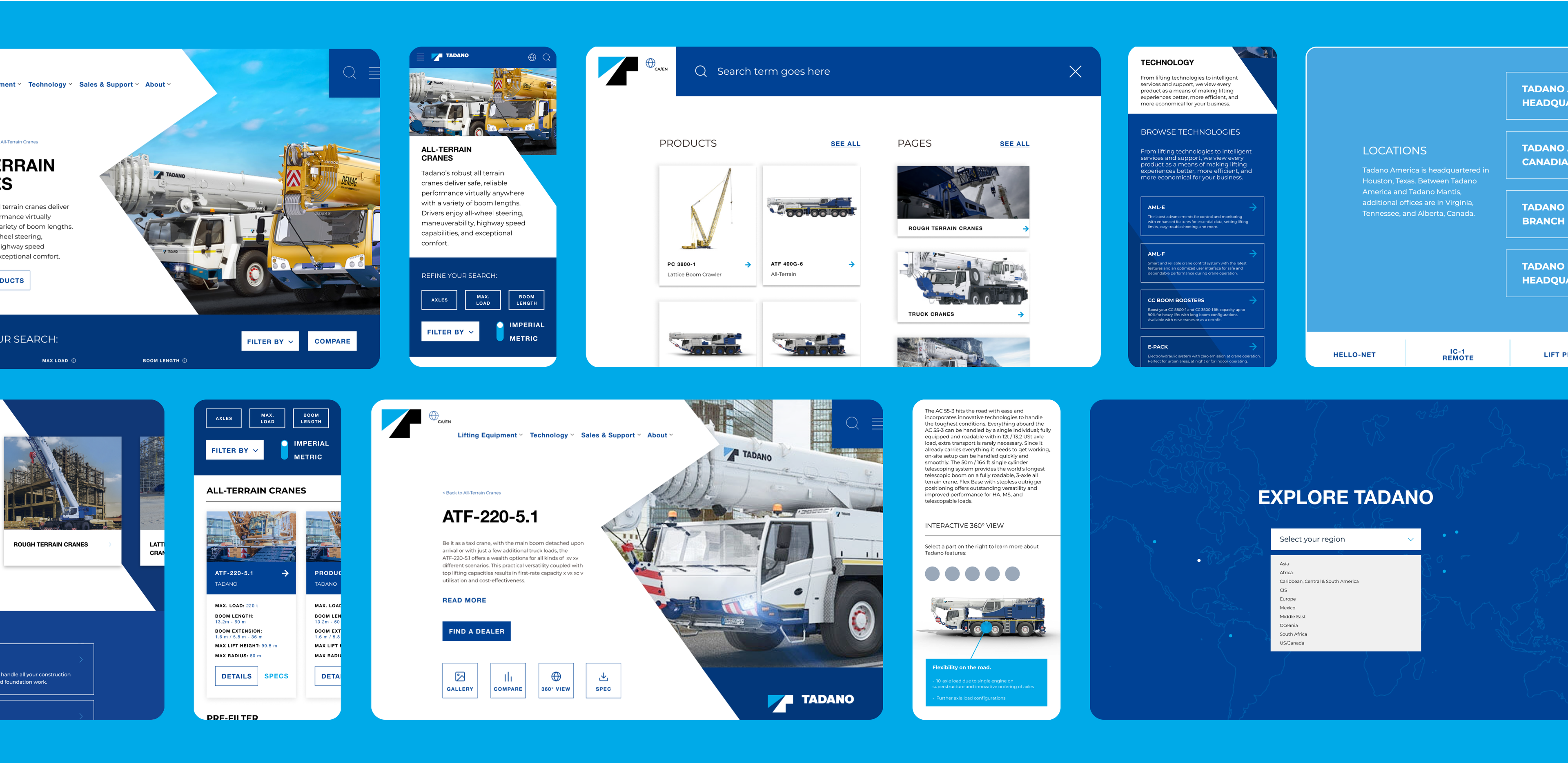
Tadano
Challenge
Tadano builds some of the most advanced lifting equipment in the world. Without their cranes, cities would be smaller, power grids less reliable, and progress in renewable energy much slower. But while the equipment was leading the industry, Tadano’s digital ecosystem had fallen behind.
Disparate regional marketing efforts had created redundant systems, disjointed processes, and a patchwork of inconsistent websites. The result was inefficiency for the business and a fragmented experience for customers around the globe.
Solution
As part of a digital strategy engagement, we identified an opportunity to both reduce costs and improve the customer experience. We recommended and built a unified global web platform and shared digital asset library for Tadano’s EU and Pan-America regions.
The result: a single WordPress multisite framework with shared templates across regions, a new global design system, and a modern experience powered by Algolia search and centralized digital assets in Celum. Following successful launches in the EU and Pan-America, the platform is now becoming the global standard for all Tadano markets.
“Geletka+ didn’t just build us a website — they helped us make the case for it. They contributed clarity to our global positioning in a post-acquisition, newly unified brand environment. They tied digital marketing investment to business outcomes, and they delivered an experience for our stakeholders that reflects the quality, strength, and scale of the Tadano brand. It is a digital platform built for flexibility and growth.”
Christian Bartley, Vice President, Marketing & Strategic Operations

Approach
Tadano needed more than a website redesign. They needed a scalable, global solution that could align teams, simplify operations, and deliver a consistent customer experience across markets. We worked closely with stakeholders in Europe, the Americas, Oceania, and Japan to architect a platform that would serve the business today and support future transformation. Every part of the system was designed to reduce friction, increase flexibility, and eliminate the need for agency maintenance for teams worldwide.

Discovery & Strategy
Before a single line of code was written, we made sure we had (literal) global alignment. Through stakeholder interviews, technical analysis, and user journey mapping, we built a foundation rooted in real needs, not assumptions.
What we actually did:
- Conducted 30 global stakeholder interviews.
- Audited existing systems and technical architecture.
- Defined global business and functional requirements.
- Mapped user journeys to uncover key moments and UX needs.
- Prioritized features based on impact, feasibility, and future scalability.
- Developed a phased development plan to guide the build.

UX Design
Using a live, clickable prototype in Figma, we aligned global teams, tested real interactions, and made smarter decisions, faster.
What we did:
- Created a clickable, testable prototype in Figma.
- Continuously updated the prototype.
- Used real-time feedback and testing to optimize the experience.
- Enabled faster alignment across product, dev, and marketing teams.

Platform Development
We delivered a flexible system that supports localization, content control, and global consistency.
What we did:
- Developed a scalable WordPress multisite architecture.
- Integrated WPML to support multilingual content.
- Designed and implemented an interactive “History."
- Built in SEO best practices to maximize visibility across markets.
- Built a simple PMS in Airtable.
- Created a Global Gateway for seamless regional navigation.



Impact
- 30 major regional websites deployed successfully.
- Platform spans 10 geographic regions and 24 languages.
- Unified brand experience and improved user journey across regions.
- Streamlined operations and reduced digital redundancy.
- Foundation set for future global digital transformation initiatives.
Credits
John Geletka + Tom Zanoni + Christian Bartley + Sven Ebinger+ Sabrina Siegel + Emma Westbrook + Alexa Heitzman + Matthias Schneider + Yuki Dobashi + Damien Bizjak + Michelle Olsen + GDC